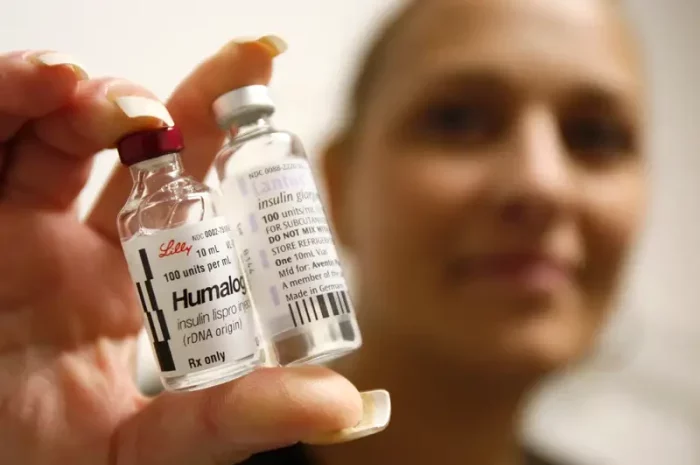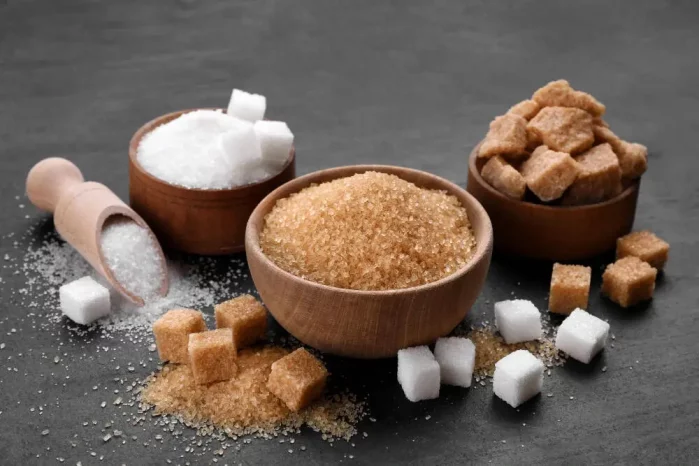Insulin resistance is a condition where the body’s cells become less responsive to the hormone insulin, leading to elevated blood glucose levels and increased risk of type 2 diabetes. This metabolic disorder is a major public health concern, affecting millions worldwide. Effective management of insulin resistance is critical to prevent the progression to diabetes and reduce associated health risks such as cardiovascular disease, obesity, and metabolic syndrome. Among the various treatment strategies, pharmacotherapy plays a pivotal role alongside lifestyle modifications. This article delves into the best medicines for insulin resistance, discussing their mechanisms, efficacy, and clinical considerations.
Metformin: The First-Line Agent
Metformin is widely recognized as the first-line pharmacologic treatment for insulin resistance and type 2 diabetes. It belongs to the biguanide class and has been used for decades due to its efficacy, safety profile, and cost-effectiveness.
Mechanism of Action
Metformin works primarily by inhibiting hepatic gluconeogenesis—the production of glucose by the liver. This action decreases fasting blood glucose levels. Additionally, metformin enhances insulin sensitivity in peripheral tissues, particularly muscle, and adipose tissues, thereby improving glucose uptake and utilization. It also reduces intestinal absorption of glucose.
Clinical Efficacy
Numerous studies have confirmed the efficacy of metformin in reducing HbA1c levels by approximately 1-2%. It is particularly effective in overweight and obese patients, as it does not promote weight gain and may even facilitate modest weight loss. Metformin also has favorable effects on lipid profiles, reducing total and LDL cholesterol levels.
Safety and Tolerability
Metformin is generally well-tolerated. The most common side effects are gastrointestinal, including nausea, diarrhea, and abdominal discomfort. These effects are usually transient and can be minimized by starting with a low dose and gradually increasing it. A rare but serious adverse effect is lactic acidosis, particularly in patients with renal impairment or severe heart failure. Therefore, regular monitoring of renal function is recommended.
Thiazolidinediones: PPAR-γ Agonists
Thiazolidinediones (TZDs), also known as glitazones, include pioglitazone and rosiglitazone. These drugs target insulin resistance by activating peroxisome proliferator-activated receptor-gamma (PPAR-γ).
Mechanism of Action
TZDs enhance insulin sensitivity in adipose tissue, muscle, and the liver. They promote the differentiation of preadipocytes into adipocytes, leading to increased storage of free fatty acids in subcutaneous fat rather than visceral fat. This redistribution of fat helps to improve insulin sensitivity. Additionally, TZDs reduce hepatic gluconeogenesis and enhance glucose uptake in muscle tissue.
Clinical Efficacy
TZDs can reduce HbA1c levels by 0.5-1.4%. Pioglitazone, in particular, has been shown to improve lipid profiles by increasing HDL cholesterol and lowering triglycerides. The effects on cardiovascular outcomes are still debated, but pioglitazone has shown some benefit in reducing the risk of stroke and myocardial infarction in specific populations.
Safety and Tolerability
TZDs are associated with weight gain due to increased adipose tissue and fluid retention, which can exacerbate heart failure. Rosiglitazone has been linked to an increased risk of myocardial infarction, leading to restrictions on its use. Both drugs can increase the risk of fractures, particularly in postmenopausal women, and may cause liver enzyme elevations. Regular monitoring of liver function and assessment for signs of fluid retention are necessary.
GLP-1 Receptor Agonists: Enhancing Incretin Effect
Glucagon-like peptide-1 (GLP-1) receptor agonists, such as exenatide and liraglutide, mimic the effects of the incretin hormone GLP-1. These drugs have gained popularity for their dual benefits in glycemic control and weight management.
Mechanism of Action
GLP-1 receptor agonists enhance glucose-dependent insulin secretion from the pancreas, suppress inappropriate glucagon secretion, slow gastric emptying, and promote satiety. These actions result in improved postprandial glucose control and reduced appetite.
Clinical Efficacy
GLP-1 receptor agonists can reduce HbA1c levels by 0.5-1.5%. They are particularly effective in promoting weight loss, with patients often losing 3-5 kg or more. This weight loss further enhances insulin sensitivity. Some agents, like liraglutide, have shown cardiovascular benefits, including reduced risk of major adverse cardiovascular events in high-risk patients.
Safety and Tolerability
The most common side effects are gastrointestinal, such as nausea, vomiting, and diarrhea, which usually decrease over time. There is a potential risk of pancreatitis, so patients with a history of pancreatitis should avoid these drugs. Some GLP-1 receptor agonists are administered via injection, which may be a barrier for some patients.
SGLT2 Inhibitors: Novel Renal Mechanism
Sodium-glucose co-transporter-2 (SGLT2) inhibitors, including canagliflozin, dapagliflozin, and empagliflozin, represent a newer class of medications that lower blood glucose by increasing renal glucose excretion.
Mechanism of Action
SGLT2 inhibitors block the reabsorption of glucose in the proximal renal tubules, leading to increased glucose excretion in the urine. This mechanism is independent of insulin, making these drugs effective even in advanced diabetes stages with significant insulin resistance.
Clinical Efficacy
SGLT2 inhibitors reduce HbA1c by 0.5-1%. They also promote weight loss (2-3 kg on average) and lower blood pressure. Empagliflozin and canagliflozin have demonstrated cardiovascular benefits, including reduced risk of heart failure hospitalization and cardiovascular death in high-risk patients.
Safety and Tolerability
Common side effects include urinary tract infections and genital mycotic infections due to increased glucose in the urine. There is also a risk of euglycemic diabetic ketoacidosis, particularly in patients with low insulin levels or those on a very low-carbohydrate diet. Monitoring for signs of dehydration and maintaining adequate hydration is important.
DPP-4 Inhibitors: Enhancing Endogenous GLP-1
Dipeptidyl peptidase-4 (DPP-4) inhibitors, such as sitagliptin and saxagliptin, prolong the action of endogenous incretin hormones by inhibiting their degradation.
Mechanism of Action
DPP-4 inhibitors enhance the effects of GLP-1 and glucose-dependent insulinotropic polypeptide (GIP), leading to increased insulin secretion and reduced glucagon release in a glucose-dependent manner.
Clinical Efficacy
DPP-4 inhibitors lower HbA1c by 0.5-0.8%. They are weight-neutral and have a low risk of hypoglycemia, making them suitable for use in combination with other antidiabetic agents.
Safety and Tolerability
These drugs are generally well-tolerated. Some reports suggest an increased risk of pancreatitis, but the evidence is not conclusive. Nasopharyngitis and headache are among the most common side effects. Regular monitoring for signs of pancreatitis is recommended.
Combination Therapies: Synergistic Effects
Combining medications with different mechanisms of action can provide synergistic effects and better glycemic control. For instance, combining metformin with a GLP-1 receptor agonist or an SGLT2 inhibitor can offer enhanced benefits, including weight loss and improved cardiovascular outcomes.
Individualized Treatment Approach
The choice of medication for insulin resistance should be individualized based on patient-specific factors such as the degree of hyperglycemia, presence of comorbidities, risk of adverse effects, and patient preferences. Here are some considerations:
- Patient Profile: Obese patients may benefit more from metformin, GLP-1 receptor agonists, or SGLT2 inhibitors due to their weight loss effects. Patients with cardiovascular disease may prefer SGLT2 inhibitors or GLP-1 receptor agonists with proven cardiovascular benefits.
- Adverse Effects: Patients at risk of heart failure or fractures should avoid TZDs. Those with a history of pancreatitis should not use GLP-1 receptor agonists or DPP-4 inhibitors.
- Renal Function: Metformin and SGLT2 inhibitors require caution or dose adjustment in patients with renal impairment. Regular monitoring of renal function is essential.
- Convenience and Adherence: Injection-based therapies like GLP-1 receptor agonists may pose adherence challenges for some patients. Oral agents like metformin, DPP-4 inhibitors, and SGLT2 inhibitors may be preferable for such individuals.
Emerging Therapies and Future Directions
The landscape of insulin resistance treatment is continually evolving, with new therapies under investigation. Dual and triple agonists targeting GLP-1, GIP, and glucagon receptors are showing promise in clinical trials. These agents aim to harness multiple pathways to enhance glycemic control, weight loss, and metabolic health.
Conclusion
Effective management of insulin resistance requires a comprehensive approach that includes lifestyle modifications and pharmacotherapy. Metformin remains the cornerstone of treatment due to its efficacy, safety, and cost-effectiveness. Thiazolidinediones, GLP-1 receptor agonists, SGLT2 inhibitors, and DPP-4 inhibitors offer additional options, each with unique benefits and potential risks. An individualized treatment plan considering patient-specific factors is essential for optimal outcomes. Ongoing research and emerging therapies hold the promise of further improving the management of insulin resistance and reducing the burden of type 2 diabetes.
As the field advances, healthcare providers must stay informed about new developments and incorporate evidence-based practices into patient care. With a tailored approach and the right pharmacologic interventions, it is possible to effectively manage insulin resistance and improve the quality of life for affected individuals.
Related topics:



























